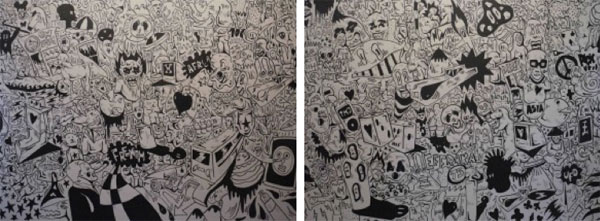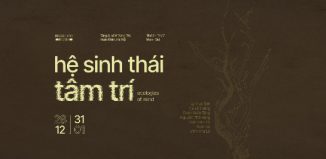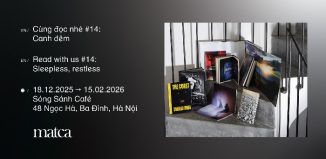The Good, the Bad and the Questionable
 |
Review: Fabien Verschaere’s ‘Fantasy World’ at Bui Gallery.
Stepping into Fabien Verschaere’s ‘Fantasy World‘ at Bui Gallery is somewhat similar to entering the brains of some weird psycho rock’n’roll mind. It’s a bizarre world of dogs cats angels demons Mickey Mouses pigs motorbikes helmets red blue white yellow peace death life dices eyes sex clowns crosses Pulp ‘Common People’ alcohol parties castles elephants ducks Hearts Diamonds aliens fires and UFOs – a place where the normal and ordinary have been extended to boundaries of the extreme and taboo. Some may call unnecessarily hideous and revolting – a low kind of art. Others may say the exhibition contains some of the most creatively and beautifully done pieces of paintings. I simply think that it’s full of uncertainties, hovering between the two above opinions and realms of knowledge.
The main purpose and intended reason behind Verschaere’s overseas works have always been to adapt to a certain place or culture, to link with its history, and to connect with it on a deeper level. Consequently, he often takes bits of his knowledge and fragments of his personal experiences, sprinkles them over his observations of another culture, and Voila! An interesting portrait of a place, town, city or country through the eye of an outsider is created. And I have to say, he did a pretty good job capturing the eccentric atmosphere of Hanoi. Or that’s how it seemed at first glance anyway.
Spread out on the two floors of the gallery, Verschaere’s paintings seem to have been curated and shown according to themes. The first floor is about and dedicated to Hanoi, while the works on the second floor focus more on his own/previous artistic practice. Yet there doesn’t seem to be any rupture or drift between one space/work and another, thanks to his consistent style of painting and the gallery’s coherent curatorial approach. Moreover, most of Verschaere’s paintings are colossal and fully absorb the exhibiting space: they stretch as far as the ceiling reaches, as wide as the wall goes. There is no time or space for us to rest; our attention constantly shifts from one piece of work to another.
As we enter the exhibition, we are not only confronted with two series of paintings: one painted straight on the walls in black and white, the other on canvases with an utterly striking shade of red; but also bombarded with a sense of extreme busyness and an out-of-this-world feeling. The more time we spend studying the works, the more confused we get. As one thing, character, creature or bunch of phrases comes into our viewpoint, another one pops up next to it, then another one creeps in, and then another one, and then another one. Painted in such manner it makes it hard for the viewers to recognize what’s really going on with(in) the paintings. We question ourselves whether to spend hours carefully studying each work, or whether a first impression is good enough, an overall feeling would do the trick? Then we realize that there is in fact no need to figure out any single central object or subject in these paintings. Every mark or brushstroke made, every character and word created, plays an important role in progressively building up a story – a never-ending modern fairy tale of Hanoi, puzzled with raw reality. And Hanoi is an ever-changing melting-pot – no one definition, description or perception is right or enough, rather it’s a matter of matching and mixing them up. In this aspect, Verschaere has well captured the feel of the town.
“But has he really?”
That’s the question that came across the second time I went to see the exhibition. It was still these black and white paintings at the entrance that kept me coming back. Fabien claimed that his method was to mix “popular images [with] images of the city, of the people, the media and the Vietnamese culture” [1]. However, there wasn’t any outstanding or significant sign and icon in his paintings that represents either the Vietnamese culture in general, or the Hanoi scene in particular. The only thing that differentiates them from being a portrait of any other city or capital in the world is the famous phrase ‘I ♥ Hanoi’ – and sadly, this phenomenon didn’t originate here, it started elsewhere on the other side of the world. This was when I asked myself whether my previous judgement made about how the artist has effectively captured the feel of Hanoi is still valid? Or whether to say that he has created only a mere and superficial sketch of the town is more suitable? It’s true he was able to represent the active aspect and chaotic state of Hanoi – its traffic, youth culture, nightlife, party scene etc. – but how about what’s beneath that fabulous and somewhat inadequate surface?
On the other hand, one can easily reproach me for judging someone who had only spent two weeks trying to identify and associate with Hanoi. Two weeks isn’t long enough for anyone to investigate or figure out a place or a culture. Even I – someone who was born and bred here – would sometimes question whether I truly understand it, and whether what’s in front of me is real and is all there is? This is why I have always adored and appreciated foreign artists and scholars – some who have spent almost all of their lives doing researches on different aspects of the Vietnamese culture; some who have done workshops around the country teaching artists a variety of skills, helping them gain more confidence and understand their positions in relation to others; some who have given up so much contributing to the culture and art scene of Hanoi… Of course, I’m in no position to request every foreign artist to do the same. After all, whether one is local or foreign, they will only know a culture to a certain extent, on a certain level, and relate to a certain generation or aspect of that culture. And an artist’s job isn’t to spend years researching a place’s history, its traditional values or activities. However, when they have chosen to do a kind of community-based or related art project, they need to be in it and live with it; they need to have at least a half-full knowledge of the place, and be able to understand its people, issues, going-ons from different points of view. Otherwise, their role becomes no different than that of a tourist – they come and go, and leave nothing special behind.
[1] Press release for Fabien Verschaere’s exhibition ‘Fantasy World’ at Bui Gallery.
Fabien Verschaere’s exhibition ‘Fantasy World’ is housed at Bui Gallery from 19/09 – 20/10/2009.
![]()
| Bill Nguyen is a fine arts graduate from Nottingham Trent University, England. He has recently returned to Hanoi and writes on contemporary art in Vietnam. |
















Ý kiến chính trực và xác đáng đến không ngờ.Nghệ thuật luôn cần những tiếng nói như vậy.Keep going on, Bill!